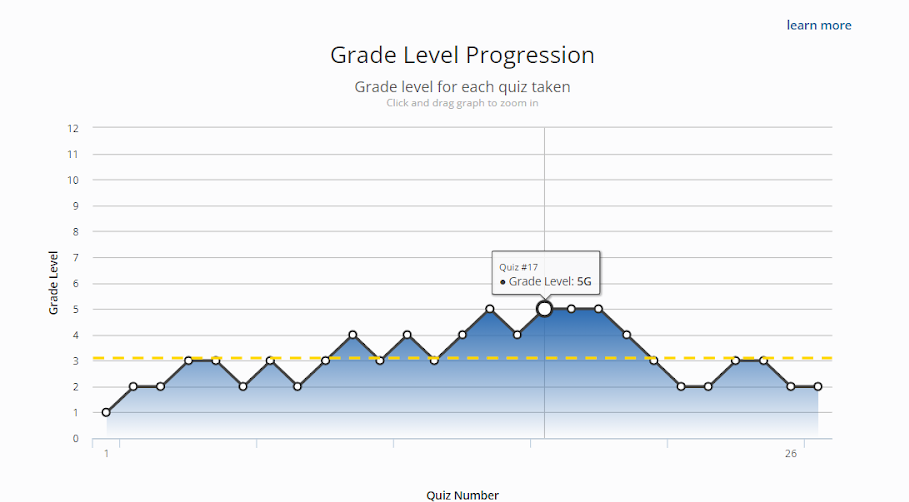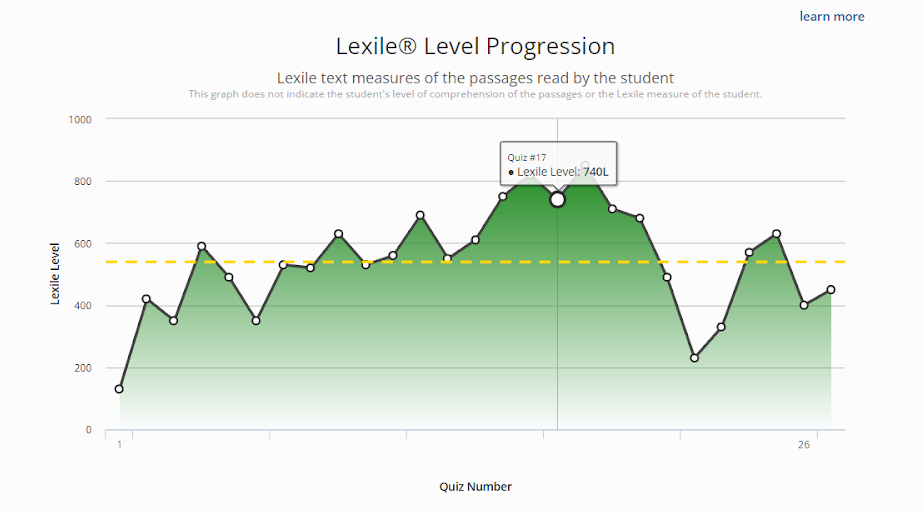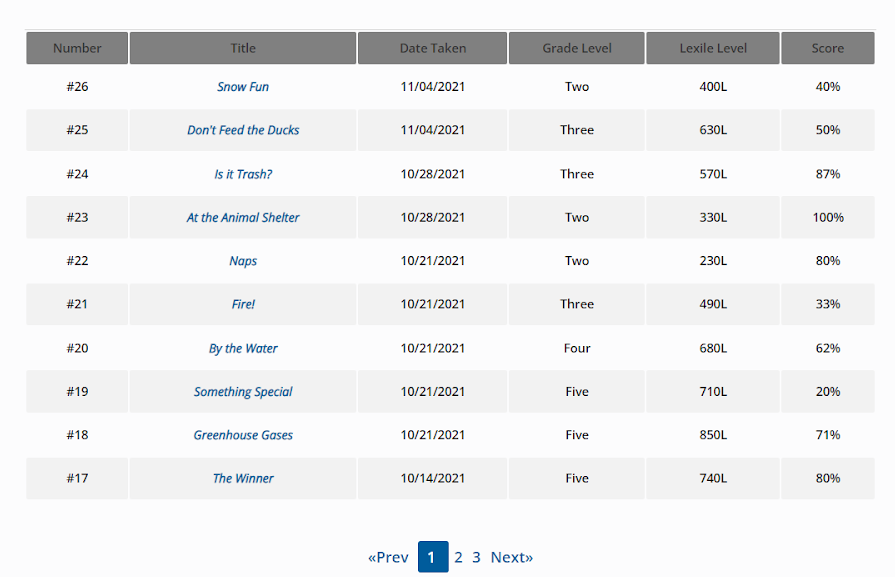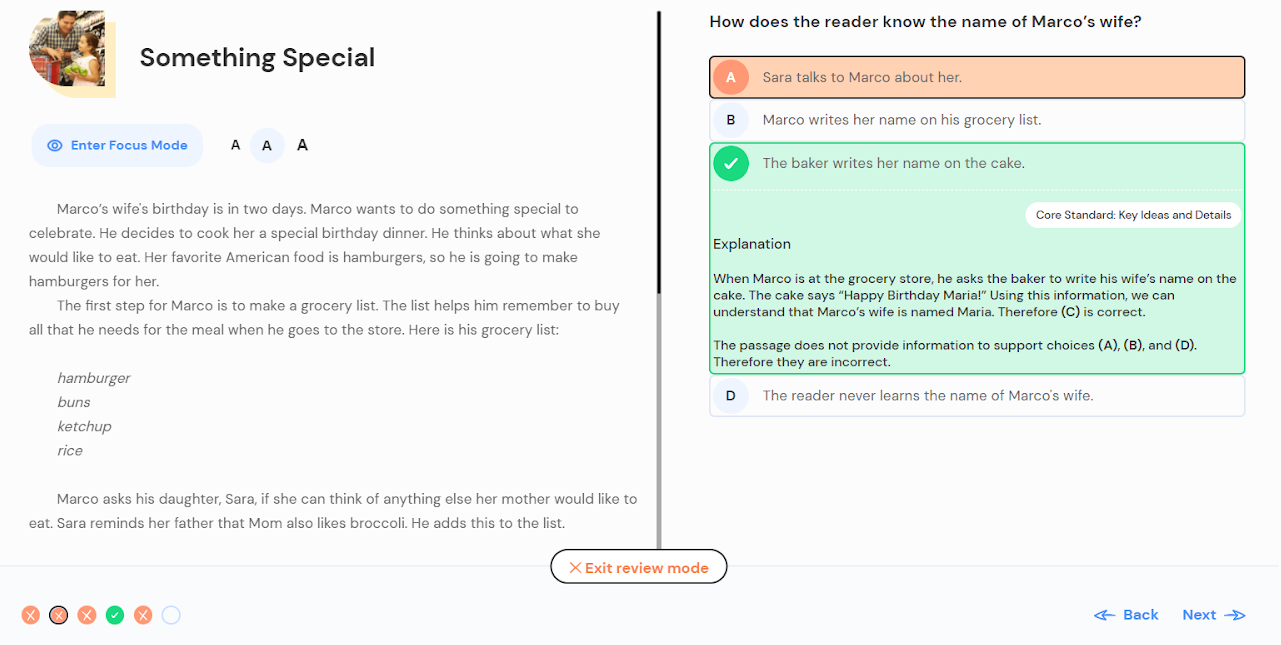Imagine it’s your birthday and you just got this wonderful gift. You have asked for it and wanted it for a long time, but now that it is a reality, you think to yourself, “Now what do I do with it?” That’s how I felt when one of my co-teachers introduced me to ReadTheory. She is an English teacher; I am a Special Education teacher. We shared a class of high school seniors several years ago. She had heard about ReadTheory and actually signed me up and set up our class. Fast forward to today. I use it with all my high school special education students. I am continually discovering the many ways ReadTheory can be utilized to help my students improve reading comprehension skills. It’s the gift that keeps on giving!
In the beginning, I used ReadTheory for baseline data and progress monitoring (more about both of these later). But as time went on, I started to notice trends in the types of questions my students consistently missed, and I saw that targeted interventions were needed. ReadTheory provides the basis for data-based targeted interventions to meet individual needs. As ReadTheory’s website says, “Differentiation is at the heart of what we do.”
Where to start
Sign up for an account and add your students. If you need help, reach out to the Support Team. Have your students login and complete the pretest. Bingo! You have your first data point. ReadTheory recommends having students complete at least 8 quizzes beyond the pretest for the most accurate initial data. See below for the reason why. Obviously, this student was “not feeling it” (yes, that is a direct quote) the first week of school when he took the pretest. The Program Average gives a more accurate picture of his current reading ability.

As you can see, not only do you get the grade level, ReadTheory also provides the Lexile level of the passages. This information is extremely beneficial when parents ask you to recommend books for students to read at home. The badges (this student has the Optimist badge) and the knowledge points are fun ways to motivate your students and encourage them to try their best. You can use this badge chart to track progress. For older students, you may want to set Knowledge Points goals each week. The students earn one knowledge point for every correct answer. If it’s a challenge question, they earn three points. The best ways to earn points quickly are by passing a quiz for 15 bonus points or getting a perfect score on a quiz for another 15 bonus points.
Progress Monitoring Data
ReadTheory provides both grade level and Lexile level progression charts so you can see a student’s progress at a glance. Here are the charts for the same student; let’s call him David. If you hover your mouse over a dot, you can see the number of the quiz so you can take a deeper dive into the data. I highlighted # 17 below. This quiz is the highest level David has attained so far this year at a 5th grade level with a Lexile level of 740L.


If you scroll further down the Progress Monitoring page, you can see the score of the quiz. In this case, David answered the questions for Quiz #17 with 80% accuracy. You can take an even deeper dive into the questions which we will do in a minute. But first, let’s look at the three Common Core Standards ReadTheory addresses. They are: Integration of Knowledge, Key Ideas and Details, and Craft and Structure. If you want to learn more about them, you can click on “learn more” for a general description. You can also see the number of questions David has answered in each area. Hover over the graph bar and it gives you the accuracy in that area. For example, David is relatively stronger on the questions involving Craft and Structure at 80% accuracy. His weakest area is Integration of Knowledge at 69% accuracy and is slightly higher at 74% accuracy in Key Ideas and Details.

Okay, Integration of Knowledge and Key Ideas and Details are great starting points, but what specifically does this student need to work on? ReadTheory has a Quiz Review feature to help you take an even deeper dive into the data. Below are the last 10 quizzes this student has taken. As you can see, he is all over the place from 2nd-5th grade passages which clearly demonstrates how ReadTheory “self-adjusts” to the individual student. When David does well, he gets higher level passages. When he does not do as well, the level drops. I can also see that October 21 was not a good day for him and I can then determine if there were any external factors that impacted him, or was it another day he was simply “not feeling it”?

David did well on Quiz # 17 (this was his first passage at a 5th grade level where he scored over 70%). He scored slightly lower on Quiz # 18 (71% accuracy), but 18 is at a higher Lexile level. Then he bombed Quiz #19 (on October 21). Based on the other 2 quizzes he should have done better on this passage. With the Quiz Review feature, you can look more closely at David’s responses. To get to the questions, click on the title. On the bottom left, you can see that this passage had 5 questions. (The 6th question is for the Written Response feature which I have turned off. If you choose to use this feature, you score the response yourself.)

In this selection, all 4 questions that David has missed are about Key Ideas and Details. A closer look at the questions shows that the key ideas and details were not explicitly told to the reader. For example, the passage doesn’t directly say that Marco’s wife’s name is Maria. The reader only can learn her name because the cake says, “Happy Birthday, Maria.” An intervention for David could be to practice citing evidence in a text when answering questions about details because citing textual evidence requires students to look back into the text for evidence to support an answer.
More Than a Program
I’ve been a long-time ReadTheory user and have been really impressed with how much the site has changed and grown over the last few years. What was previously just a reading comprehension program is now a one-stop-shop for amazing resources to use in the classroom and to inform what you’re doing in the classroom.
- Teacher’s Lounge: You’ve already found their platform for teachers to share information and resources! This is a great place to start your search for reading intervention resources. With articles about everything from Empathy-Building, to Video Literacy, to Supporting ESL Students, the Teacher’s Lounge has something to inspire every teacher.
- Worksheets: Who doesn’t love paper copies of passages and questions? Definitely have these on hand when the internet gremlins are at work! They are separated by grade level with passages from 1st-12th grade. There are also passages for Adults, ESL students, and Special Education students. Each section has instructions and teacher tips. These worksheets can be used to get Fluency data or to work on targeted skills. For example, I will pull one of these passages at a 4th grade reading level for David to practice citing evidence. If he struggles, I can try one at 3rd grade level.
- Lesson Plans: There are 8 topics (Characterization, Theme, and Point of View to name a few) and each topic has a week’s worth of lesson plans! These include a Teacher Guide, Daily Powerpoints with Teacher Notes, Printable Passages, Student Notes, Activities, Warm Ups, Exit Tickets and a Short Standards-Focused Assessment. These are great for whole class instruction and the work has been done for you!
More Time for Targeted Help
I happen to think that the gift of time is one of the best gifts of all! When my English teacher friend gifted me ReadTheory, it was something I had wanted for a long time but didn’t know where to find it. She actually gave it to me as a result of one of my more common rants at the time. I had been lamenting (again!) about how hard it was to find appropriate reading materials for high school students that were at lower reading levels but didn’t look like they were designed for 1st and 2nd graders. ReadTheory solved that problem! Using it is like having your own personal library of reading resources, and you don’t have to spend a lot of time searching for them! You can track and show positive growth in your students’ reading abilities. Like I said before, it’s the gift that keeps on giving!



